I really enjoy watching Top Shot, and the BAR will be great fun to see tonight on the show. Yes, it’s a reality TV show, and yes, I would fast forward through the drama given the chance – but I love seeing the great shooting session they put together and the cool guns that wind up in the show. It’s great to watch the shooters who are have both serious skill and great sportsmanship and clearly love shooting – like Kelly Bachand and Dustin Ellerman.
I should really put together an audition video for Season 5…but that’s another matter. 🙂
Anyway, the BAR – I’m writing this before the show has aired, so I don’t know what they’ll have the competitors do with it. But I’ve shot a couple BARs (A Swedish converted to .30-06 and an Israeli FN-D in 7.62 NATO) and I have no doubt the competitors will enjoy the experience.
We have a number of BAR manuals posted on the BAR page in the Vault, and I dug out a couple more to add today. It is interesting to note how the BAR developed outside US military service. The gun was originally designed for the trenches of WWI, intended for “walking fire”, which troops would advance on enemy lines calmly firing from the hip (the original magazine belts for BAR gunners include a metal socket to hold the butt of the gun). The gun made a big impression on everyone who encountered it in 1918, largely because of the lack of anything else comparable. But by World War II the original concept was thoroughly obsolete. Int eh late 1930s the M1918A1 and A2 BAr rifles were developed, which added a bipod to the gun and envisioned it as a supporting light machine gun.
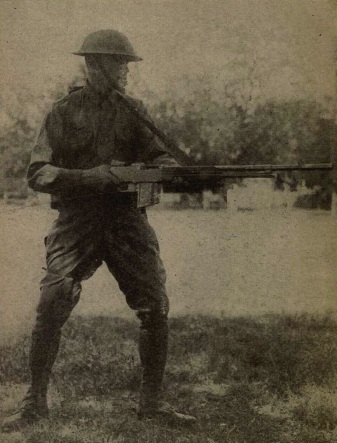
The A2 BAR also had a somewhat unusual feature; a selectable rate reducer in the buttstock. Instead of a selector for semiauto and full auto, it had a selector to switch between slow fire (~300 rpm) and rapid fire (~550 rpm). A BAR set on slow fire is an interesting experience in machine gun terms – it shoots with a slow chug-chug-chug and is more controllable than one would expect of a fullauto .30 caliber. One has to focus on a specific target – “spraying” and area at 350rpm is ineffectual. Switching to the fast setting makes the BAR behave much more like you would expect, climbing stubbornly and emptying its 20-round magazine much to quickly.
Outside of US military service, the BAR was adopted in various forms by prison guards, police departments, Sweden, Poland, Belgium, and other countries in smaller numbers. While foreign variants of the BAR continued to evolve and improve over time, the US military models were required to be backwards-compatible with the original M1918 variant which prevented most improvements.
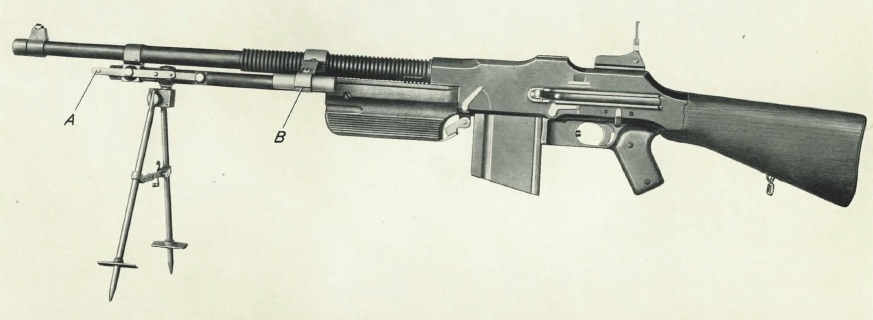
The most fully-developed BAR was made under license by Fabrique Nationale in Belgium, and designated the FN-D. This model featured a pistol grip (a significant improvement over the standard stock on the M1918), a rate reducer moved to the area between the grip and magazine, and a quick-change barrel only . These were made mostly in 8x57mm and 7x57mm, although some were adopted by Israel and converted to 7.62 NATO. These modifications addressed the biggest complaints about the BAR – excessive weight and its rapid overheating (the M1918 and M1918A2 had fixed barrels). The Swedish military adopted a similar pistol gripped BAR in the Kg m/21, which they later modified to use a Q-D barrel as well (the Kg m/37). You can find more information on the Swedish BARs at the Gothia Arms Historical Society BAR page. Poland also adopted a BAR with a pistol grip and chambered for 8mm Mauser as the wz. 1928.
For those who are interested, I’m adding two more manuals to our BAR page in the Vault – one on the commercial Colt R75(A) with a quick-change barrel and one on the Swedish m/21 and m/37 guns (in Swedish):
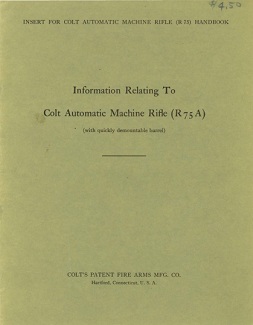
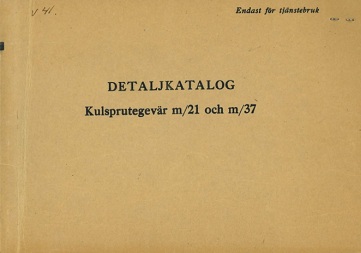

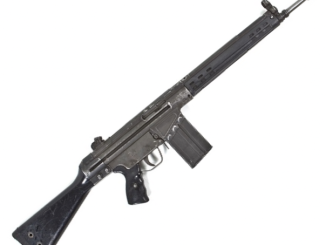
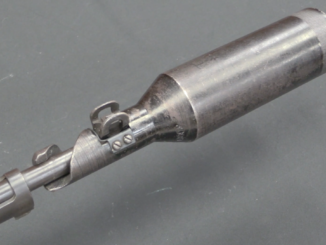
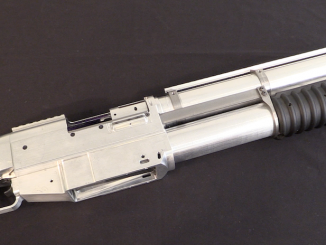
One might observe that the BAR lives on in the M240 Machine Gun. The M240 is the BAR with the bolt inverted, a quick change barrel & a feeder mechanism “borrowed” from one of the more successful machine guns of WWII. Altogether, a clever and sensible improvement of an already successful design.
Actually, I believe the origianal M-1918 was the lightest, lacking even a bipod.
The Euro versions were seen more as a LMG than an Automatic Rifle and had heavier
bbl’s pistol grips and even tripod mounts.